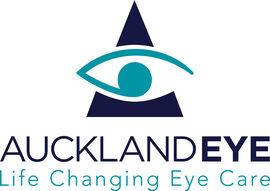Central Auckland, East Auckland, South Auckland, West Auckland, North Auckland > Private Hospitals & Specialists >
Auckland Eye Ltd
Private Service, Ophthalmology
Today
7:30 AM to 6:00 PM.
Description
Auckland Eye is New Zealand’s centre of excellence for eye care, with a totally tailored approach that provides the best possible outcome for our patients.
Our team of leading experts are highly trained in their particular area of expertise and provide a complete range of services including:
* Laser Vision Correction: SMILE, LASIK, PRK
* Cataract Surgery
* Glaucoma Management
* Cosmetic Eyelid Surgery
* Paediatric Eye Care
* Corneal Surgery
* Vitreoretinal Surgery
* Medical Retinal Treatments
Combined with Oasis Surgical – Auckland’s premier eye surgery facility – we offer superior treatment and world-class care in a relaxed, friendly environment. Both centres are independently accredited against EQUIP5 standards for excellence in patient care and services.
Auckland Eye is an ACC accredited provider and offers urgent appointments. We also have dedicated consulting facilities in Takapuna, Ormiston, Pukekohe and New Lynn as well as providing appointments at a wide range of other locations across the Auckland region.
What is Ophthalmology?
Ophthalmology is the branch of specialist medicine that is focused on the health of eyes and their surrounding tissues, including muscles, bones, eyelids, and tear production/drainage systems. Your eye is the organ of vision and consists of the cornea (the outer clear layer), the sclera (the white of the eye), the iris (the coloured part), the lens (lies behind the iris) and the retina (the light-sensitive lining at the back of the eye). Your eyes ‘see’ by focusing light that enters the eye onto the retina which sends the image to the brain by the optic nerve. Ophthalmologists are doctors who are trained in the study of eyes. All are trained in eye surgery, and often have particular areas of interest or expertise.
Consultants
Note: Please note below that some people are not available at all locations.
-

Dr Stephen Best
Ophthalmologist
Available at 8 St Marks Road, Remuera, Auckland, 3 Fred Thomas Drive, Takapuna, 211 Ormiston Road, Flat Bush, Auckland
-

Dr Riyaz Bhikoo
Ophthalmologist
Available at 8 St Marks Road, Remuera, Auckland, 3 Fred Thomas Drive, Takapuna, 211 Ormiston Road, Flat Bush, Auckland
-

Dr Stuart Carroll
Ophthalmologist
Available at 8 St Marks Road, Remuera, Auckland, 3 Fred Thomas Drive, Takapuna
-

Dr Shenton Chew
Ophthalmologist
Available at 8 St Marks Road, Remuera, Auckland, 3 Fred Thomas Drive, Takapuna, Tōtara Health, 1 McCrae Way, New Lynn, Auckland, 211 Ormiston Road, Flat Bush, Auckland
-

Dr Chi-Ying Chou
Ophthalmologist
Available at 8 St Marks Road, Remuera, Auckland, 3 Fred Thomas Drive, Takapuna, Tōtara Health, 1 McCrae Way, New Lynn, Auckland, 8d Tamariki Avenue, Ōrewa, 211 Ormiston Road, Flat Bush, Auckland
-

Dr Dean Corbett
Ophthalmologist
Available at 8 St Marks Road, Remuera, Auckland, 3 Fred Thomas Drive, Takapuna, 8d Tamariki Avenue, Ōrewa
-

Dr Sarah Hull
Ophthalmologist
Available at 8 St Marks Road, Remuera, Auckland, 3 Fred Thomas Drive, Takapuna
-

Dr Archie McGeorge
Ophthalmologist
Available at 8 St Marks Road, Remuera, Auckland, 3 Fred Thomas Drive, Takapuna, 8d Tamariki Avenue, Ōrewa
-

Dr Justin Mora
Ophthalmologist
Available at 8 St Marks Road, Remuera, Auckland, Tōtara Health, 1 McCrae Way, New Lynn, Auckland, 211 Ormiston Road, Flat Bush, Auckland, 12 Glasgow Road, Pukekohe, Auckland
-

Dr Yvonne Ng
Ophthalmologist
Available at 8 St Marks Road, Remuera, Auckland, 3 Fred Thomas Drive, Takapuna
-

Dr Rachael Niederer
Ophthalmologist
Available at 8 St Marks Road, Remuera, Auckland
-

Dr Siddharth Ogra
Ophthalmologist
Available at 8 St Marks Road, Remuera, Auckland, 211 Ormiston Road, Flat Bush, Auckland
-

Dr Susan Ormonde
Ophthalmologist
Available at 8 St Marks Road, Remuera, Auckland, 3 Fred Thomas Drive, Takapuna, Westgate Medical Centre, 13E Maki Street, Westgate, Auckland
-

Dr Taras Papchenko
Ophthalmologist
Available at 8 St Marks Road, Remuera, Auckland, 3 Fred Thomas Drive, Takapuna, Tōtara Health, 1 McCrae Way, New Lynn, Auckland
-

Dr David Pendergrast
Ophthalmologist
Available at 8 St Marks Road, Remuera, Auckland, 12 Glasgow Road, Pukekohe, Auckland
-

Dr Alison Pereira
Ophthalmologist
Available at 8 St Marks Road, Remuera, Auckland, 3 Fred Thomas Drive, Takapuna
-

Dr Sarah Welch
Ophthalmologist
Available at 8 St Marks Road, Remuera, Auckland, Tōtara Health, 1 McCrae Way, New Lynn, Auckland, 211 Ormiston Road, Flat Bush, Auckland, 12 Glasgow Road, Pukekohe, Auckland
-

Dr Joel Yap
Ophthalmologist
Available at 8 St Marks Road, Remuera, Auckland, 19 Kamo Road, Whangārei, Tōtara Health, 1 McCrae Way, New Lynn, Auckland, 211 Ormiston Road, Flat Bush, Auckland
How do I access this service?
Referral
Referrers: find a referral form here
Referral Expectations
For all appointments please call (09) 529 2480.
Fees and Charges Categorisation
Fees apply
Fees and Charges Description
Auckland Eye Ltd are Southern Cross Affiliated providers for the following services:
- Cataract surgery
- Chalazion or tarsal cyst removal
- Corneal cross-linking
- Cyclophotocoagulation
- Dexamethasone intravitreal implant
- Intravitreal injections
- Pterygium or pinguecula surgery
- Syringing of tear ducts or lacrimal probe
Hours
7:30 AM to 6:00 PM.
| Mon – Fri | 7:30 AM – 6:00 PM |
|---|
Public Holidays: Closed ANZAC Day (25 Apr), King's Birthday (3 Jun), Matariki (28 Jun), Labour Day (28 Oct), Auckland Anniversary (27 Jan), Waitangi Day (6 Feb), Good Friday (18 Apr), Easter Sunday (20 Apr), Easter Monday (21 Apr).
Procedures / Treatments
Laser Vision Correction, or Laser Eye Surgery, uses laser to change the shape of the cornea (surface of your eye) to correct focusing errors (like short sightedness and astigmatism) with extreme precision. Auckland Eye offers three main options for laser eye surgery – the widest choice available anywhere in New Zealand. You’ll need a full assessment from one our specialists to see which option is right for you: SMILE (Small Incision Lenticule Extraction) – the quickest, most technologically advanced and precise laser eye surgery in the world. This one step, one laser, keyhole laser eye surgery has been designed and perfected by Carl Zeiss – a huge step forward in laser treatments and one that Auckland Eye is proud to be able to offer exclusively in Auckland. LASIK (Laser Assisted In-Situ Keratomileusis) – the most well known laser eye surgery. Millions of people worldwide have already benefited from this advanced two step, two laser technique, with proven results. PRK (Photo-Refractive Keratectomy) – the original proven and effective laser eye surgery. Though LASIK is a more common treatment, PRK is a safer option for those people unable to have LASIK because of thinner corneas. Auckland Eye offers a free assessment to patients interested in laser eye surgery and the appointment usually takes approx 45 minutes to complete. Please call 0800 639393 or visit www.aucklandeyelaser.co.nz for more information.
Laser Vision Correction, or Laser Eye Surgery, uses laser to change the shape of the cornea (surface of your eye) to correct focusing errors (like short sightedness and astigmatism) with extreme precision. Auckland Eye offers three main options for laser eye surgery – the widest choice available anywhere in New Zealand. You’ll need a full assessment from one our specialists to see which option is right for you: SMILE (Small Incision Lenticule Extraction) – the quickest, most technologically advanced and precise laser eye surgery in the world. This one step, one laser, keyhole laser eye surgery has been designed and perfected by Carl Zeiss – a huge step forward in laser treatments and one that Auckland Eye is proud to be able to offer exclusively in Auckland. LASIK (Laser Assisted In-Situ Keratomileusis) – the most well known laser eye surgery. Millions of people worldwide have already benefited from this advanced two step, two laser technique, with proven results. PRK (Photo-Refractive Keratectomy) – the original proven and effective laser eye surgery. Though LASIK is a more common treatment, PRK is a safer option for those people unable to have LASIK because of thinner corneas. Auckland Eye offers a free assessment to patients interested in laser eye surgery and the appointment usually takes approx 45 minutes to complete. Please call 0800 639393 or visit www.aucklandeyelaser.co.nz for more information.
Laser Vision Correction, or Laser Eye Surgery, uses laser to change the shape of the cornea (surface of your eye) to correct focusing errors (like short sightedness and astigmatism) with extreme precision.
Auckland Eye offers three main options for laser eye surgery – the widest choice available anywhere in New Zealand. You’ll need a full assessment from one our specialists to see which option is right for you:
- SMILE (Small Incision Lenticule Extraction) – the quickest, most technologically advanced and precise laser eye surgery in the world. This one step, one laser, keyhole laser eye surgery has been designed and perfected by Carl Zeiss – a huge step forward in laser treatments and one that Auckland Eye is proud to be able to offer exclusively in Auckland.
- LASIK (Laser Assisted In-Situ Keratomileusis) – the most well known laser eye surgery. Millions of people worldwide have already benefited from this advanced two step, two laser technique, with proven results.
- PRK (Photo-Refractive Keratectomy) – the original proven and effective laser eye surgery. Though LASIK is a more common treatment, PRK is a safer option for those people unable to have LASIK because of thinner corneas.
Auckland Eye offers a free assessment to patients interested in laser eye surgery and the appointment usually takes approx 45 minutes to complete. Please call 0800 639393 or visit www.aucklandeyelaser.co.nz for more information.
A cataract is a progressive cloudiness that develops inside the lens of the eye. As it progresses, light passing through the eye is reduced and people often notice their eyesight becoming more and more blurry, colours lose their brightness and driving at night can become problematic. Once a cataract affects vision too much, a cataract removal operation is generally advised. This decision is usually made in consultation with an eye specialist. The operation is almost always done under local anaesthetic. Once the cataract has been removed an artificial lens is put in to replace it. It is relatively short in duration and an overnight stay in hospital is not required. Post-operative care consists of eye drops and a check at 1-2 days then after 2-4 weeks. Please bring to your appointment for your cataract assessment your glasses and the names of any medications you use. You will have your eyes examined and this normally requires dilating drops being placed into your eyes which can make it difficult to drive home, so it is advisable to bring a driver. If a cataract removal is advised, you will require a few more eye measurements and then you will meet a surgical bookings clerk to arrange a date in the future for the surgery. The whole appointment will normally take approximately an hour to complete. Click here for more information.
A cataract is a progressive cloudiness that develops inside the lens of the eye. As it progresses, light passing through the eye is reduced and people often notice their eyesight becoming more and more blurry, colours lose their brightness and driving at night can become problematic. Once a cataract affects vision too much, a cataract removal operation is generally advised. This decision is usually made in consultation with an eye specialist. The operation is almost always done under local anaesthetic. Once the cataract has been removed an artificial lens is put in to replace it. It is relatively short in duration and an overnight stay in hospital is not required. Post-operative care consists of eye drops and a check at 1-2 days then after 2-4 weeks. Please bring to your appointment for your cataract assessment your glasses and the names of any medications you use. You will have your eyes examined and this normally requires dilating drops being placed into your eyes which can make it difficult to drive home, so it is advisable to bring a driver. If a cataract removal is advised, you will require a few more eye measurements and then you will meet a surgical bookings clerk to arrange a date in the future for the surgery. The whole appointment will normally take approximately an hour to complete. Click here for more information.
A cataract is a progressive cloudiness that develops inside the lens of the eye. As it progresses, light passing through the eye is reduced and people often notice their eyesight becoming more and more blurry, colours lose their brightness and driving at night can become problematic.
Click here for more information.
A squint or strabismus is present when the two eyes are not looking in the same direction. It may be apparent all the time or only when a patient is tired, unwell or focusing on either a near or distant object. It affects mainly children under the age of seven but can also affect adults as a long standing or recurring problem, or following a nerve palsy. Children suspected of a squint should be seen promptly by an eye specialist. No child is too young to be seen. The appointment will take up to an hour as your child will have their eyesight checked, possibly other measurements taken and then drops put in their eyes. The drops can take up to forty minutes to work. The doctor can then accurately check the eye focus and health and prescribe glasses if necessary. If your child does have an eye problem, then they will need regular checks until they are approximately seven when their eye and brain connections start to mature. In adults a squint from a nerve palsy may improve on its own and treatment may be delayed until the squint has stabilised. Your initial appointment may take up to an hour and you will have measurements taken of your eyes and possibly your pupils dilated. The doctor may also request some additional tests i.e.blood tests to decide what may be causing the squint. In both children and adults, surgical correction of the squint may be necessary. This usually involves a general anaesthetic. In the procedure, the muscles involved are repositioned to correct the alignment.
A squint or strabismus is present when the two eyes are not looking in the same direction. It may be apparent all the time or only when a patient is tired, unwell or focusing on either a near or distant object. It affects mainly children under the age of seven but can also affect adults as a long standing or recurring problem, or following a nerve palsy. Children suspected of a squint should be seen promptly by an eye specialist. No child is too young to be seen. The appointment will take up to an hour as your child will have their eyesight checked, possibly other measurements taken and then drops put in their eyes. The drops can take up to forty minutes to work. The doctor can then accurately check the eye focus and health and prescribe glasses if necessary. If your child does have an eye problem, then they will need regular checks until they are approximately seven when their eye and brain connections start to mature. In adults a squint from a nerve palsy may improve on its own and treatment may be delayed until the squint has stabilised. Your initial appointment may take up to an hour and you will have measurements taken of your eyes and possibly your pupils dilated. The doctor may also request some additional tests i.e.blood tests to decide what may be causing the squint. In both children and adults, surgical correction of the squint may be necessary. This usually involves a general anaesthetic. In the procedure, the muscles involved are repositioned to correct the alignment.
Glaucoma is a group of diseases that can damage the eye’s optic nerve and may result in vision loss and blindness. Multiple factors are often important in causing glaucoma, but it is most commonly related to an increase in pressure in the eye. Symptoms are generally absent until the condition has progressed to an advanced stage. Very occasionally, a rarer form of glaucoma can develop suddenly and symptoms may then include: headaches and aches around the affected eye, seeing halos around lights, sensitivity to light, blurred vision, nausea and vomiting. You may be more likely to develop glaucoma if you: have someone else in your family with glaucoma already have high pressure in your eye have experienced injury to your eye have or have had certain other eye problems have migraine or circulation problems. Glaucoma is more common in people over 50 years of age and more common in women than men. Actual diagnosis of glaucoma can be difficult and may take months or even years, with repeat testing to determine its presence or absence. Diagnosis is usually confirmed by an eye doctor but signs of glaucoma may also be picked up at an optometrist’s eye examination. The following tests are used to diagnose and monitor glaucoma: Tonometry – measures eye pressure. It is often the first screening test for glaucoma. The eyes are numbed with eye drops and then examined. Dilated eye exam - this is done with an ophthalmoscope (which is a medical instrument that allows the doctor to look through the pupil to the back of the eye).The retina and optic nerve are then examined for any sign of damage. Visual acuity test – test to check distance vision using an eye chart. Visual field test – test to measure side (peripheral) vision. Pachymetry – test to measure the thickness of the cornea. OCT - Nerve fibre layer measurement can aid in diagnosing and monitoring glaucoma. Digital photo's - used to obtain a baseline reading of the optic nerve and monitor any possible glaucoma changes over time. Many other new techniques are emerging to help identify the likelihood of glaucoma and help determine its rate of worsening. Although glaucoma cannot be cured, early treatment can prevent further worsening of the condition and vision loss. Regular eye examinations will need to be continued life-long. When you attend for your initial assessment please bring your glasses with you and any medication you take on a regular basis. It is advisable to bring a driver to your appointment as you may have dilating drops put in your eyes and this can make driving home difficult. You will have some of the tests listed above at your initial appointment and may then require repeat testing on a regular basis if glaucoma is suspected. Eye drops to decrease eye pressure are the most common early treatment. Surgery may be required, especially if medications are not taking adequate effect. Laser trabeculoplasty, in which a surgeon uses a laser to help the fluid drain from the eye, may be considered in some cases, but has limited effectiveness. More commonly, a trabeculectomy may be performed when other methods have failed to adequately control pressure. This is a medium length operation that makes a new opening for fluid to drain from the eye.
Glaucoma is a group of diseases that can damage the eye’s optic nerve and may result in vision loss and blindness. Multiple factors are often important in causing glaucoma, but it is most commonly related to an increase in pressure in the eye. Symptoms are generally absent until the condition has progressed to an advanced stage. Very occasionally, a rarer form of glaucoma can develop suddenly and symptoms may then include: headaches and aches around the affected eye, seeing halos around lights, sensitivity to light, blurred vision, nausea and vomiting. You may be more likely to develop glaucoma if you: have someone else in your family with glaucoma already have high pressure in your eye have experienced injury to your eye have or have had certain other eye problems have migraine or circulation problems. Glaucoma is more common in people over 50 years of age and more common in women than men. Actual diagnosis of glaucoma can be difficult and may take months or even years, with repeat testing to determine its presence or absence. Diagnosis is usually confirmed by an eye doctor but signs of glaucoma may also be picked up at an optometrist’s eye examination. The following tests are used to diagnose and monitor glaucoma: Tonometry – measures eye pressure. It is often the first screening test for glaucoma. The eyes are numbed with eye drops and then examined. Dilated eye exam - this is done with an ophthalmoscope (which is a medical instrument that allows the doctor to look through the pupil to the back of the eye).The retina and optic nerve are then examined for any sign of damage. Visual acuity test – test to check distance vision using an eye chart. Visual field test – test to measure side (peripheral) vision. Pachymetry – test to measure the thickness of the cornea. OCT - Nerve fibre layer measurement can aid in diagnosing and monitoring glaucoma. Digital photo's - used to obtain a baseline reading of the optic nerve and monitor any possible glaucoma changes over time. Many other new techniques are emerging to help identify the likelihood of glaucoma and help determine its rate of worsening. Although glaucoma cannot be cured, early treatment can prevent further worsening of the condition and vision loss. Regular eye examinations will need to be continued life-long. When you attend for your initial assessment please bring your glasses with you and any medication you take on a regular basis. It is advisable to bring a driver to your appointment as you may have dilating drops put in your eyes and this can make driving home difficult. You will have some of the tests listed above at your initial appointment and may then require repeat testing on a regular basis if glaucoma is suspected. Eye drops to decrease eye pressure are the most common early treatment. Surgery may be required, especially if medications are not taking adequate effect. Laser trabeculoplasty, in which a surgeon uses a laser to help the fluid drain from the eye, may be considered in some cases, but has limited effectiveness. More commonly, a trabeculectomy may be performed when other methods have failed to adequately control pressure. This is a medium length operation that makes a new opening for fluid to drain from the eye.
- have someone else in your family with glaucoma
- already have high pressure in your eye
- have experienced injury to your eye
- have or have had certain other eye problems
- have migraine or circulation problems.
- Tonometry – measures eye pressure. It is often the first screening test for glaucoma. The eyes are numbed with eye drops and then examined.
- Dilated eye exam - this is done with an ophthalmoscope (which is a medical instrument that allows the doctor to look through the pupil to the back of the eye).The retina and optic nerve are then examined for any sign of damage.
- Visual acuity test – test to check distance vision using an eye chart.
- Visual field test – test to measure side (peripheral) vision.
- Pachymetry – test to measure the thickness of the cornea.
- OCT - Nerve fibre layer measurement can aid in diagnosing and monitoring glaucoma.
- Digital photo's - used to obtain a baseline reading of the optic nerve and monitor any possible glaucoma changes over time.
This is a complication of diabetes and is caused by small blood vessel damage within the retina of the eye. It commonly affects both eyes and may cause permanent loss of vision. Macular oedema is sometimes also present with diabetic retinopathy. Macular oedema is when fluid leaks into the retina and causes swelling and blurred vision. This may occur at any stage of diabetic retinopathy, but is more common as the disease progresses. There are often no symptoms in the early stages but as the condition progresses vision may begin to become impaired. Often visual loss may be sudden and without warning. This is why it is imperative that at-risk diabetics have frequent eye checks. Poorly controlled diabetes and pregnancy in diabetes are risk factors for developing this condition. When you are referrred for an initial assessment please bring to your appointment: The appointment slip and a referral letter if you have one Any glasses you are currently using Arrange for someone to drive you. You will have drops put in your eyes to dilate the pupils which allows the doctor to look at the back of the eye in greater detail. Drops can take a while to work, so please allow an hour for your appointment. Often, first-stage diabetic retinopathy requires no active treatment on the eye but requires stabilisation of diabetes and regular eye examinations. With progressive retinopathy, a laser treatment called the PRP laser can be used. This works by shrinking enlarged blood vessels to prevent further bleeding into the retina. Severe bleeding may require a surgical procedure called a vitrectomy, where blood is surgically removed from the eye. Treatment of macular oedema, if present, is by focal laser treatment. Vision is stabilised by reducing the degree of fluid leakage into the retina. Often more than one treatment is required.
This is a complication of diabetes and is caused by small blood vessel damage within the retina of the eye. It commonly affects both eyes and may cause permanent loss of vision. Macular oedema is sometimes also present with diabetic retinopathy. Macular oedema is when fluid leaks into the retina and causes swelling and blurred vision. This may occur at any stage of diabetic retinopathy, but is more common as the disease progresses. There are often no symptoms in the early stages but as the condition progresses vision may begin to become impaired. Often visual loss may be sudden and without warning. This is why it is imperative that at-risk diabetics have frequent eye checks. Poorly controlled diabetes and pregnancy in diabetes are risk factors for developing this condition. When you are referrred for an initial assessment please bring to your appointment: The appointment slip and a referral letter if you have one Any glasses you are currently using Arrange for someone to drive you. You will have drops put in your eyes to dilate the pupils which allows the doctor to look at the back of the eye in greater detail. Drops can take a while to work, so please allow an hour for your appointment. Often, first-stage diabetic retinopathy requires no active treatment on the eye but requires stabilisation of diabetes and regular eye examinations. With progressive retinopathy, a laser treatment called the PRP laser can be used. This works by shrinking enlarged blood vessels to prevent further bleeding into the retina. Severe bleeding may require a surgical procedure called a vitrectomy, where blood is surgically removed from the eye. Treatment of macular oedema, if present, is by focal laser treatment. Vision is stabilised by reducing the degree of fluid leakage into the retina. Often more than one treatment is required.
- The appointment slip and a referral letter if you have one
- Any glasses you are currently using
- Arrange for someone to drive you. You will have drops put in your eyes to dilate the pupils which allows the doctor to look at the back of the eye in greater detail. Drops can take a while to work, so please allow an hour for your appointment.
This is when the retina (the back layer of the eye) detaches, meaning it lifts or separates from its normal position within the eye. An acute retinal detachment requires urgent assessment and appropriate treatment. Unless prompt and effective treatment is given, some forms of retinal detachment may lead to irreversible blindness. Signs and symptoms include: a sudden or gradual increase in floaters deterioration in vision cobwebs or specks with the visual field (peripheral vision) light flashes in the eye or the appearance of curtains over the visual field (peripheral vision). You are more likely to have a retinal detachment if you are very short-sighted or have had an injury or previous surgery to the eye. At your assessment for a possible retinal detatchment you will have drops put in your eyes to dilate the pupil and allow the doctor a better view of the back of the eye. This will make driving home difficult, so it is advisable to bring a driver. Please also bring along any glasses that you wear and any medication you take. The appointment will take approximately an hour. If treatment is indicated, this may be done whilst you are at the clinic or another date organised in the near future. For minor detachments, a laser or freeze treatment (cryopexy) are used. Both therapies re-attach the retina. For major detachment, surgery will be necessary. A band is often put around the back of the eye to prevent further detachment. Surgical treatment is usually a vitrectomy, where the jelly (vitreous which also sits in the back of the eye) is removed. This often involves a hospital stay. It can take several months post-surgery to see the final visual result.
This is when the retina (the back layer of the eye) detaches, meaning it lifts or separates from its normal position within the eye. An acute retinal detachment requires urgent assessment and appropriate treatment. Unless prompt and effective treatment is given, some forms of retinal detachment may lead to irreversible blindness. Signs and symptoms include: a sudden or gradual increase in floaters deterioration in vision cobwebs or specks with the visual field (peripheral vision) light flashes in the eye or the appearance of curtains over the visual field (peripheral vision). You are more likely to have a retinal detachment if you are very short-sighted or have had an injury or previous surgery to the eye. At your assessment for a possible retinal detatchment you will have drops put in your eyes to dilate the pupil and allow the doctor a better view of the back of the eye. This will make driving home difficult, so it is advisable to bring a driver. Please also bring along any glasses that you wear and any medication you take. The appointment will take approximately an hour. If treatment is indicated, this may be done whilst you are at the clinic or another date organised in the near future. For minor detachments, a laser or freeze treatment (cryopexy) are used. Both therapies re-attach the retina. For major detachment, surgery will be necessary. A band is often put around the back of the eye to prevent further detachment. Surgical treatment is usually a vitrectomy, where the jelly (vitreous which also sits in the back of the eye) is removed. This often involves a hospital stay. It can take several months post-surgery to see the final visual result.
- a sudden or gradual increase in floaters
- deterioration in vision
- cobwebs or specks with the visual field (peripheral vision)
- light flashes in the eye or the appearance of curtains over the visual field (peripheral vision).
Disability Assistance
Wheelchair access, Mobility parking space, Wheelchair accessible toilet, Quiet, low sensory environment, Support to make decisions
Additional Details
Face to face / Kanohi ki te Kanohi, Speak with women / wahine, Speak with men / tane, Child / Tamariki friendly, LGBTQIA+ friendly
Online Booking URL
Document Downloads
-
Auckland Eye map
(PDF, 4.5 MB)
Map of the Remuera location
Refreshments
Complimentary tea and coffee is available.
Travel Directions
Click here to view our locations.
Public Transport
The Auckland Transport website is a good resource to plan your public transport options.
Parking
Auckland Eye Ltd (Remuera)
Free off-street parking is available
Auckland Eye North Shore (Takapuna)
Free off-street parking is available in front of the building
Over 200 free parking spaces are available on-site
Totara Health, New Lynn
Access to the car park is from McCrae Way. A new Auckland Transport car park is attached to Totara Health Services with up to 2 hours free parking reserved for patients on Level 1 of the car park. Once you have parked please take two tickets from the parking machine - put one on your dashboard and give the other to the Health New Lynn receptionist when you cross the air bridge into Totara Health Services.
Website
Contact Details
8 St Marks Road, Remuera, Auckland
Central Auckland
7:30 AM to 6:00 PM.
-
Phone
0800 255 393 or 09 529 2480
Healthlink EDI
auckleye
Email
Website
3 Fred Thomas Drive, Takapuna
North Auckland
7:30 AM to 6:00 PM.
-
Phone
0800 255 393 or 09 529 2480
Healthlink EDI
auckleye
Email
Website
19 Kamo Road, Whangārei
Northland
7:30 AM to 6:00 PM.
-
Phone
0800 255 393 or 09 529 2480
Healthlink EDI
auckleye
Email
Website
Westgate Medical Centre, 13E Maki Street, Westgate, Auckland
West Auckland
7:30 AM to 6:00 PM.
-
Phone
0800 255 393 or 09 529 2480
Healthlink EDI
auckleye
Email
Website
Tōtara Health, 1 McCrae Way, New Lynn, Auckland
West Auckland
7:30 AM to 6:00 PM.
-
Phone
0800 255 393 or 09 529 2480
Healthlink EDI
auckleye
Email
Website
8d Tamariki Avenue, Ōrewa
North Auckland
7:30 AM to 6:00 PM.
-
Phone
0800 255 393 or 09 529 2480
Healthlink EDI
auckleye
Email
Website
211 Ormiston Road, Flat Bush, Auckland
South Auckland
7:30 AM to 6:00 PM.
-
Phone
0800 255 393 or 09 529 2480
Healthlink EDI
auckleye
Email
Website
12 Glasgow Road, Pukekohe, Auckland
South Auckland
7:30 AM to 6:00 PM.
-
Phone
0800 255 393 or 09 529 2480
Healthlink EDI
auckleye
Email
Website
Was this page helpful?
This page was last updated at 9:57AM on October 31, 2023. This information is reviewed and edited by Auckland Eye Ltd.

